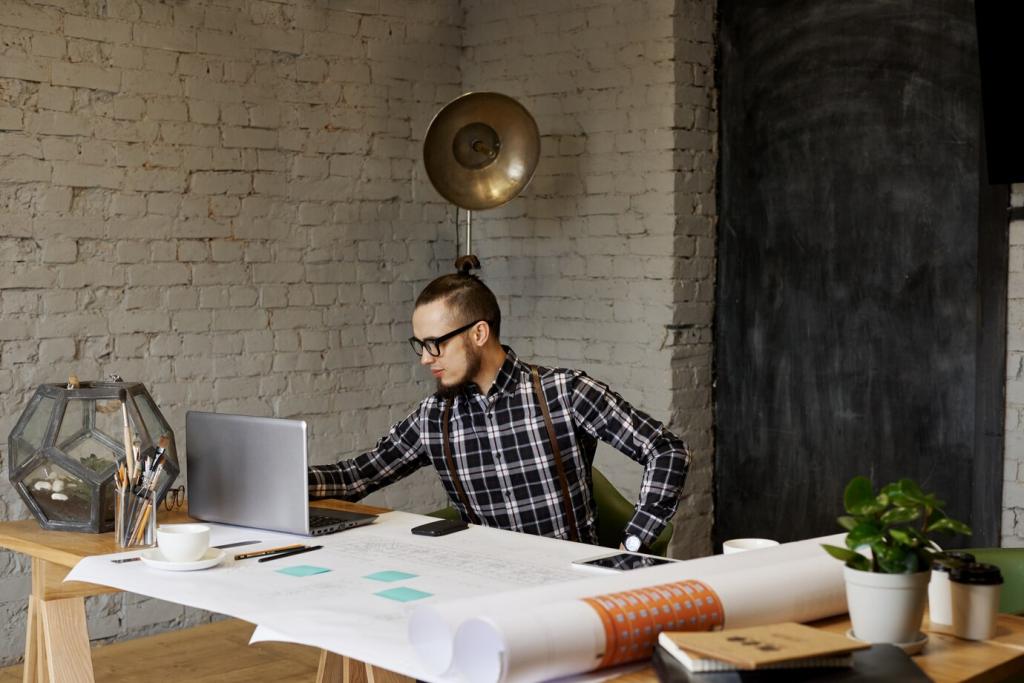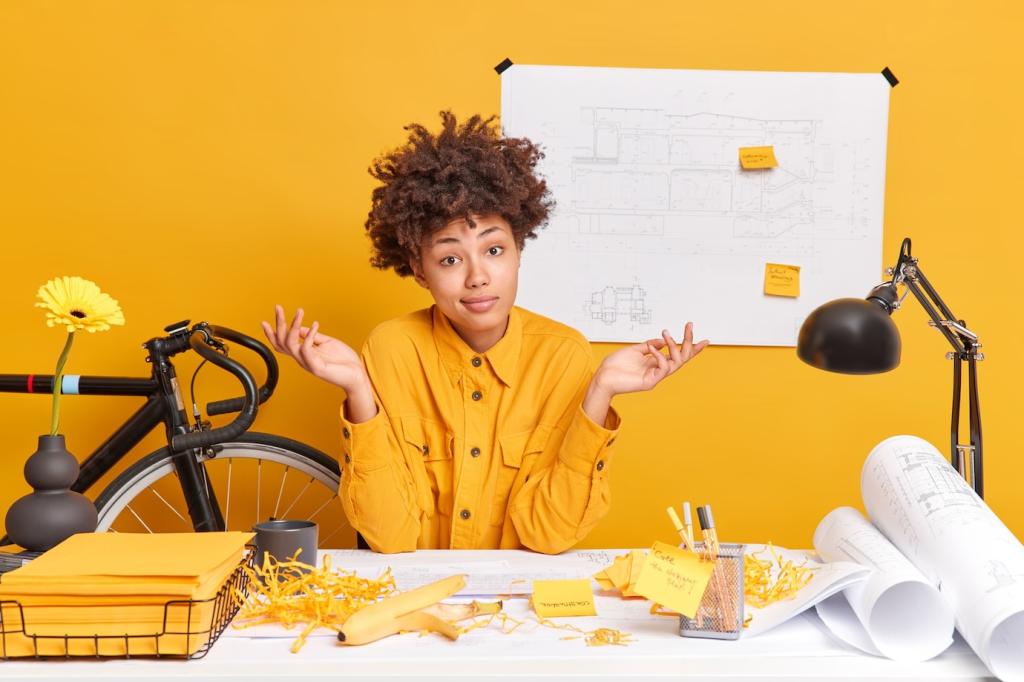Ergonomic Essentials for a Minimalist Desk
Welcome to our deep dive into “Ergonomic Essentials for a Minimalist Desk.” We blend clean aesthetics with body-friendly setup tips, real-life stories, and easy wins you can apply today. If this resonates, subscribe, comment with your questions, and share your desk photos for thoughtful feedback.
Neutral Posture Is Your North Star
Aim for relaxed shoulders, elbows near ninety degrees, wrists neutral, and hips slightly above knees. This posture supports your spine while letting minimal surfaces shine. Share a photo of your current setup, and we will suggest small tweaks to help.
Line of Sight and Reach Zones
Place frequently used items within easy reach to avoid shoulder strain and desk clutter. Keep your primary screen at or slightly below eye level. Comment with your desk depth and monitor size, and we will help calculate an ideal viewing distance.
Declutter to Reduce Cognitive Load
Every visual element competes for attention. Fewer objects mean less decision fatigue and smoother posture changes. Try a one-tray rule for tools. Tell us which single item caused the biggest clarity boost when you removed it from your surface.

Seat Height, Pelvic Tilt, and Foot Support
Adjust seat height so feet rest flat or on a slim footrest. A slight forward pelvic tilt encourages a healthy lumbar curve. If you are short on space, consider a low-profile footrest. Ask for our compact picks suitable for shallow leg clearance.
Lumbar Support Without the Bulk
You do not need an oversized chair to support your back. A simple, adjustable lumbar pad or thin cushion can do wonders. Share your chair model, and we will recommend a minimal add-on that preserves clean lines and comfortable hours.
Move Often: Microbreaks Beat Fancy Gadgets
Even a perfect chair cannot replace movement. Set a subtle timer for posture shifts every thirty to forty minutes. Stand, stretch, or walk to refill water. Comment with your favorite microbreak routine so others can borrow your simple ideas.
Top of the display at or slightly below eye level reduces neck extension. Distance generally ranges from fifty to seventy centimeters, depending on size and resolution. Post your monitor size and resolution, and we will suggest a personalized target distance.
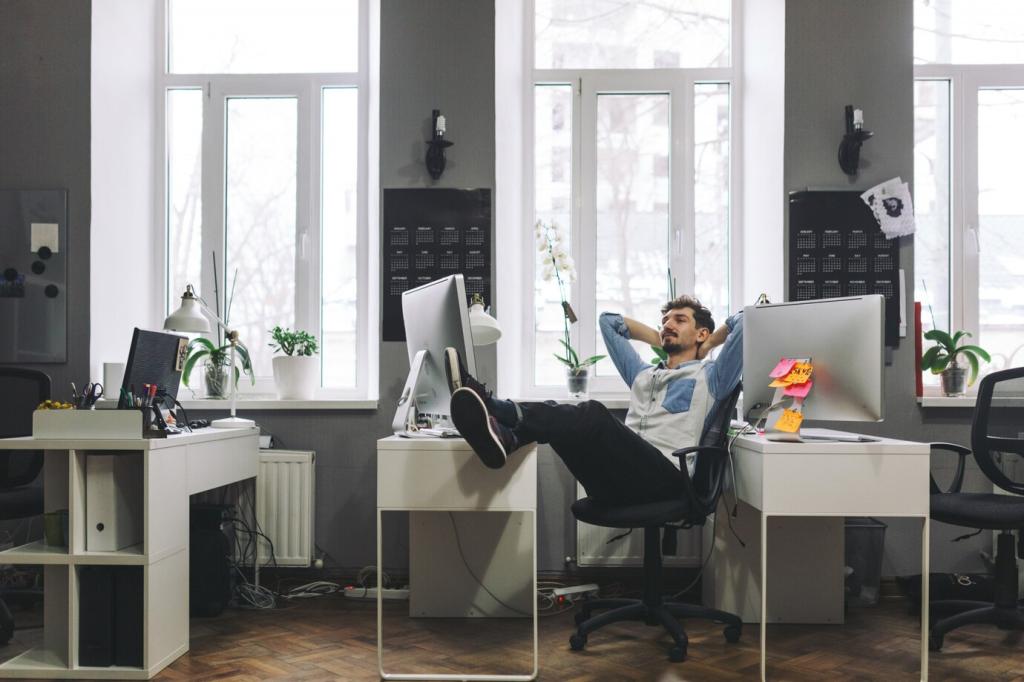
Keyboards and Pointing Devices, Simplified
A low-profile keyboard reduces wrist extension and finger reach. Keep negative tilt minimal, avoiding front risers that bend wrists up. Share your current keyboard height from desk to home row, and we will help you fine-tune your typing posture.
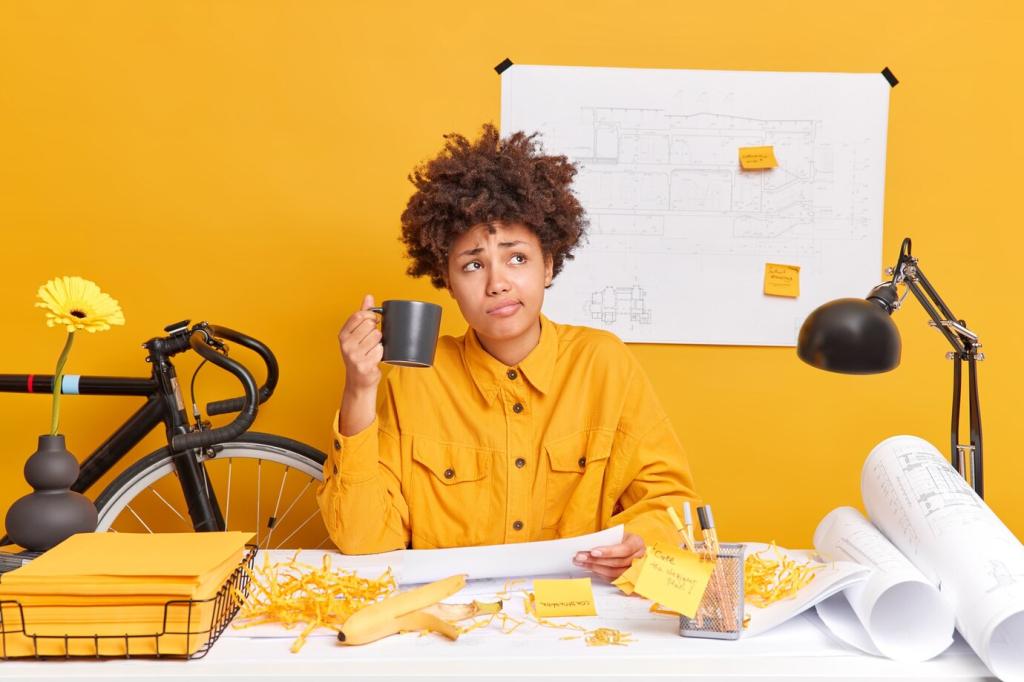
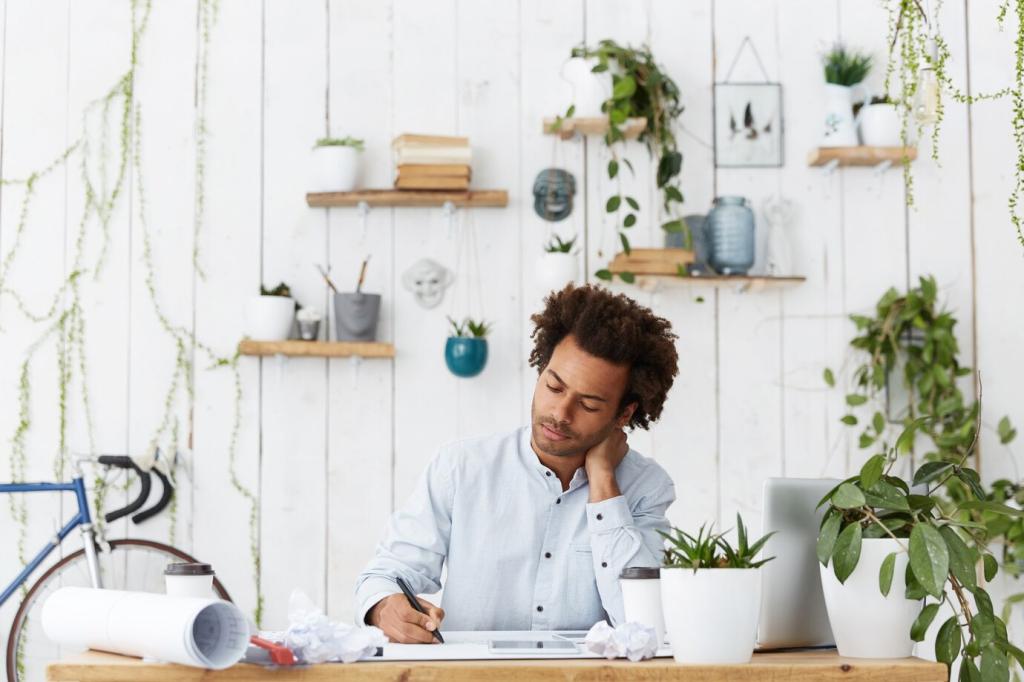
Keyboards and Pointing Devices, Simplified
Compact split boards allow shoulder-width typing, decreasing ulnar deviation. Gentle tenting can help some users. If this sounds complex, start with a narrow, flat board. Comment with any wrist discomfort patterns, and we will suggest the simplest adjustment.
Light, Glare, and Eye Comfort
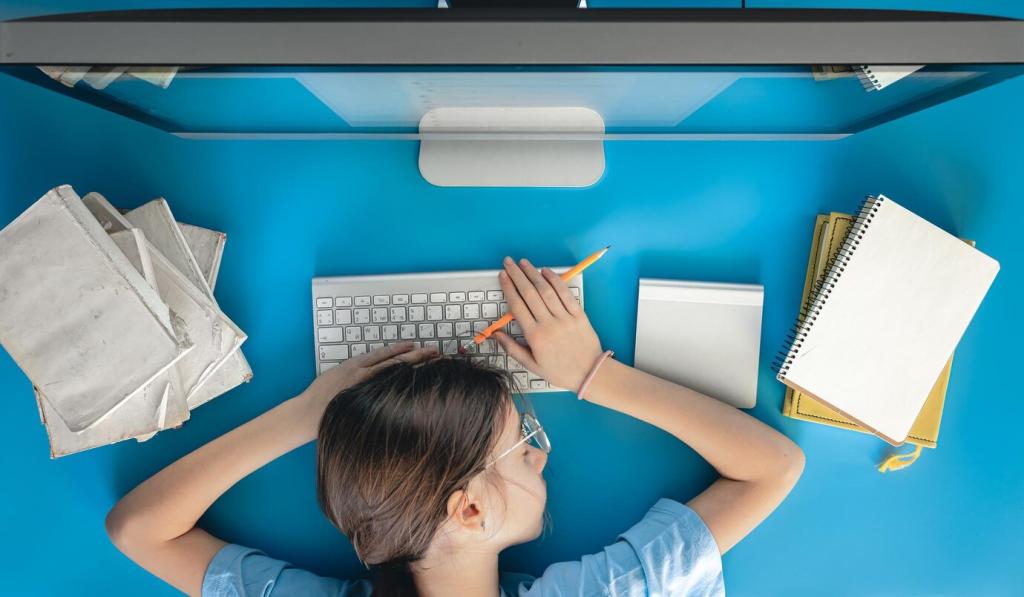
Choose a compact task light with a high color rendering index for crisp text and accurate colors. Angle it to avoid screen washout. Share your lamp model or budget, and we will suggest minimal options that disappear until you need them.
Cable and Power Discipline
A shallow metal tray and a few adhesive clips route power neatly out of the way. Leave service loops for easy device swaps. Share a quick sketch of your layout, and we will advise a simple path with minimal drilling or tools.
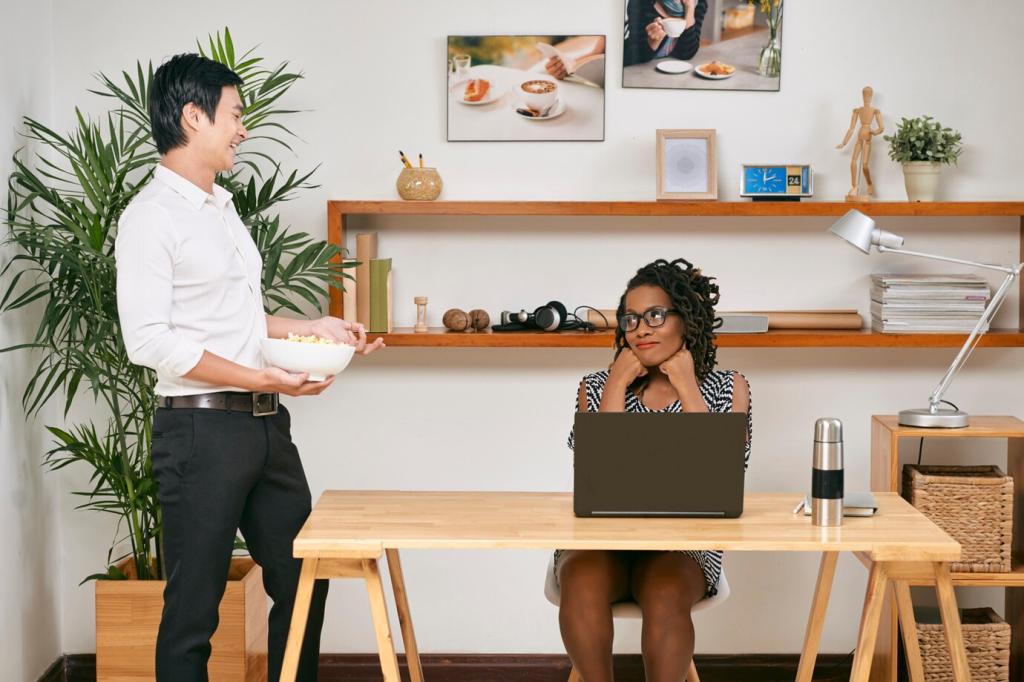
Daily Rituals and Long-Term Habits
Every twenty minutes, look twenty feet away for twenty seconds. Pair it with a gentle neck roll and blink reminder. Share whether you prefer phone timers or ambient cues, and we will suggest unobtrusive methods that keep your focus uninterrupted.
Daily Rituals and Long-Term Habits
Once per day, clear the surface, coil stray cables, and realign keyboard and monitor. It is amazingly restorative. Tell us your favorite reset soundtrack, and invite a friend to try it too—habit buddies make minimalist ergonomics stick.
